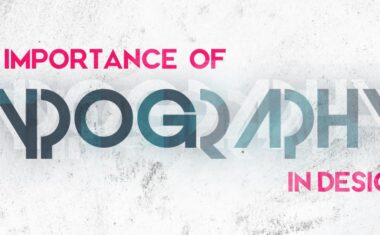What Does a UX/UI Designer in the Education Sector Do?

In this article
Online learning platforms and edtech have historically lagged behind mainstream consumer tech, and nowhere has this been more apparent than during the Covid-19 pandemic when schools and colleges around the world were forced to use technology for remote learning—attendance fell, systems crashed, and many students felt disconnected from both their peers and the material they were learning.
Recognizing these shortcomings, the e-learning sector—from K-12 school systems and colleges to edtech startups—has begun heavily investing in UX/UI designers to bolster student engagement across the board. UX professionals are being brought in to help colleges revamp their websites to improve recruitment; design educational games that are as enjoyable and desirable as mainstream video games; build tools that make both teaching and learning more accessible and enjoyable; streamline and simplify learning portals; and make online learning as effective as possible.
When successful, UX designers can have a significant impact on large swaths of the population. According to the U.S. Census Bureau, 65% of households with children used remote learning during the pandemic. Before Covid-19, a quarter of all post-secondary students in the U.S. were enrolled in a distance education course of some kind. And the value of the edtech market reached almost $90 billion in 2020 alone.
“Digital education is predicted to thrive with a wide array of beneficiaries across the geographical regions, age, and socio-economic conditions,” according to research firm Grand View Research. “The education sector is on the cusp of a digital revolution.”
Learn more about the opportunities, responsibilities, and salaries of UX/UI designers in the education industry here.
How Is UX/UI Design Used in the Education Industry?
At its core, UX/UI design in the education sector isn’t too different from UX/UI design in other industries—the ultimate goal is to create a positive user experience that will lead to stronger user engagement, retention, and, depending on the product or service, conversion. But when it comes to UX for edtech, designers have to consider the needs of multiple stakeholders, who each have different goals, challenges, and preferences.
“Understanding student, teacher, and school leader needs, and developing educational experiences that serve those needs, is the ultimate in service design,” according to UX designer Pilar Strutin-Belinoff. “Public education requires a different approach, not the standard rollout of research and design deliverables—your standard discussion guide nor protocol won’t work here.
Below are some of the ways UX design is employed in the education sector:
- Easy-to-use, with the right kind of effort. While many UX designers in other industries are tasked with creating delightful, effortless user experiences, the education sector is more concerned with making the user experience as efficient as possible, with just enough effort to achieve learning goals. “Delighting customers doesn’t build loyalty; reducing their effort—the work they must do to get their problem solved—does,” according to the Harvard Business Review. This is highly applicable to online learning, according to Alex Britez, the director of UX at Macmillan Learning, because “when the outcome you are chasing is learning, effort and learning go hand-in-hand.” Britez says that effort “does not mean disregarding traditional user experience outcomes”—an edtech service or platform should still be user-friendly and intuitive—it’s more about striking a balance between directing user effort toward learning instead of grappling with the tech itself.
- Desirability. “If we are going to ask students to go against their natural tendencies and knowingly increase their effort in the pursuit of learning, designers might think about how to address motivation through areas such as variable rewards, goal-setting, and feedback-driven metacognition,” Alex Britez said. The Khan Academy Kids application, designed for children ages 2-5, is notable for employing the bells and whistles that engage students in topics ranging from math to language—the app uses five characters to guide students through activities, animated videos, and creative lessons.
- User psychology. Most UX designers have some understanding of user psychology—they can anticipate how a product or service might be used, the challenges a user might encounter, and the types of design that could frustrate or delight a customer. UX designers working in education go through the added step of understanding how users learn, and are able to design products that are most conducive to helping users retain information. The Duolingo language learning app is an oft-cited example of a learning service that makes use of psychology research—its lessons are short, the structure involves frequent testing, and the content is repeated for the user’s benefit. “Because of this, Duolingo helps users better retain the vocabulary,” according to Getting Smart. “These short phrases make it easy for users to achieve high scores and progress through the app, which creates a sense of achievement and momentum that compels users to keep playing.”
- Accessibility. The Americans with Disabilities Act requires all educational institutions to make their digital content accessible to students with disabilities. This presents organizations and UX/UI designers with opportunities to rethink their websites, platforms, and tools to ensure that they’re accessible to everyone. Accessibility issues aren’t limited to disabilities, though—as the recent pandemic-related move to remote learning has shown, poor internet connectivity, shared household computers, and slow-running devices can also pose accessibility challenges, many of which fall under the purview of problem-solving UX designers.
Education Industry UX/UI Designer Job Roles/Responsibilities

Most UX/UI designers bring technical design skills to the table such as the ability to conduct and make sense of user research; wireframing and prototyping; interactive design; visual communication; information architecture; and proficiency with tools such as Sketch, Invision Studio, Proto.io, Webflow, Balsamiq, and Axure. And while these skills might help a designer build a visually appealing e-learning platform, the education industry expects its UX/UI designers to develop a strong understanding of student psychology so that they can both appeal to reluctant users and effectively deliver learning materials.
“Students compare the apps and platforms they see in the classroom not only to similar products at school, but to non-education applications and platforms that often seem more exciting by comparison,” according to Danielle Reid, the leader director of design at Toptal. “In order for students to choose an education game or platform over non-education ones, the app must be exceptional in all aspects, especially in its design.”
Some of the key responsibilities of UX/UI designers at education organizations include:
- Conducting and/or using user research to understand what issues/pain-points students and instructors face when they engage with the elearning game or platform
- Conducting design experiments and A/B testing, listening to user feedback, and staying on top of industry trends to develop student-centered design solutions
- Understanding the goals and desired calls-to-action of an organization’s elearning platform and finding ways to meet those goals while still advocating for the student
- Designing a consistent user experience across mobile devices and desktop platforms
- Collaborating with UX researchers, data scientists, information architects, marketers, and engineers to test, iterate, and launch products and services that are satisfying to use and achieve their educational goals
Get To Know Other Design Students
Florence Chan
Product Designer at Zola
Volkan Kantar
UX Designer at Microsoft
Diego Encarnacion
Design Researcher And UX Designer at IBM
Education Industry UX/UI Designer Salary
Among hiring managers, UX/UI design is one of the top five most in-demand skills, according to a LinkedIn report, with the demand expected to rise throughout 2021. And as investment in elearning platforms and academies increases, so too will demand for UX/UI designers who can make those platforms engaging, accessible, and effective.
UX/UI designer salaries are typically determined by education, years of experience, location, and organization type. As of 2021, the average base salary of an entry-level UX/UI designer in the education sector is around $74,000. The average base salary of a senior-level UX/UI designer in the video game industry is around $100,966.
Since you’re here…
Not sure where you’ll find the time to learn UX and UI skills? We’re here to help. Our fully flexible UI/UX Design Bootcamp takes just 12-15 hours a week over 6 months and is proven to increase student salaries by $25,033 on average per annum. We’ve helped over 10,000 students make the switch without quitting their day jobs – shouldn’t you be next? Jump in today with our free design fundamentals course.





